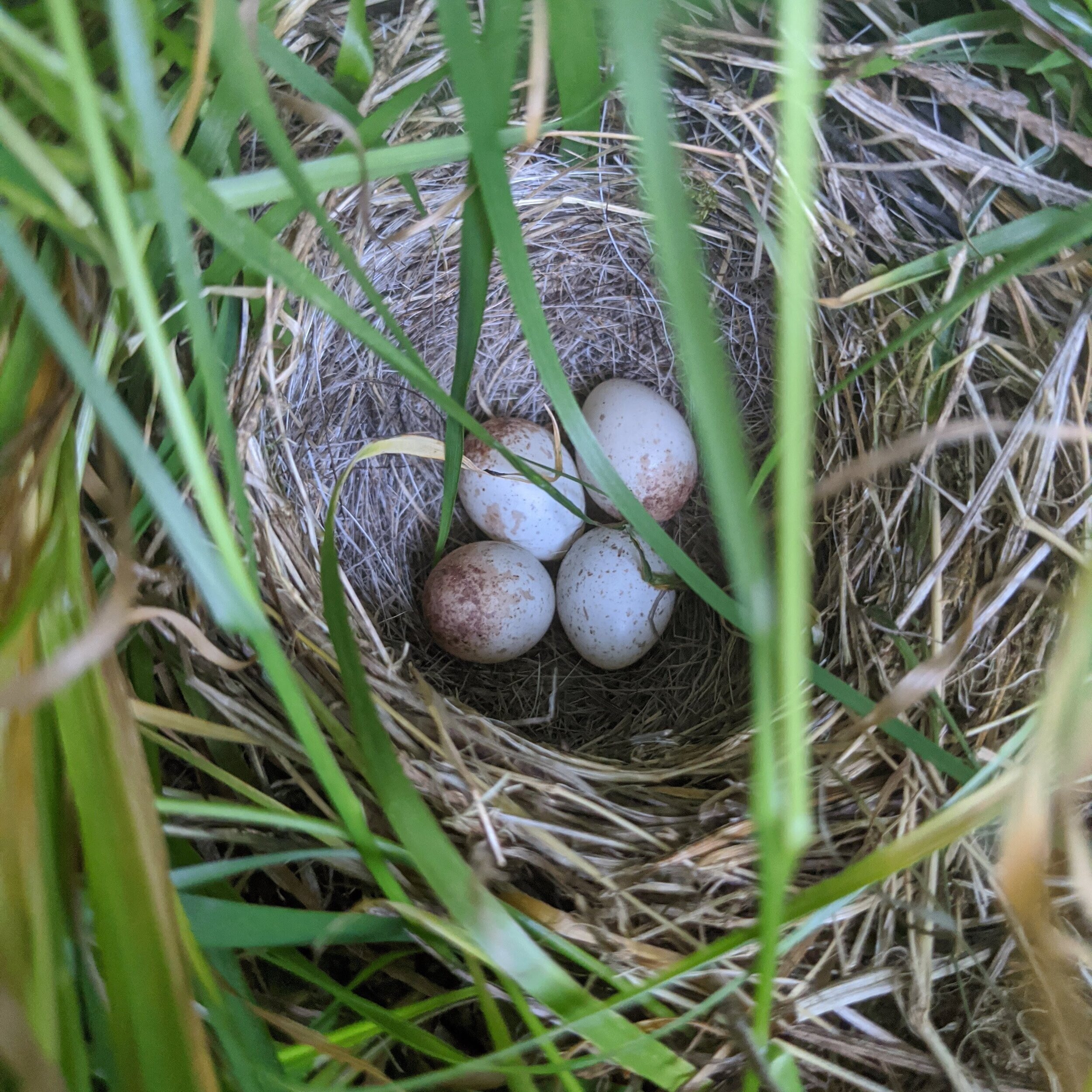Bird Eggs
/The robin egg. The blue color comes from a pigment called biliverdin.
Walking through Sound View’s forest yesterday, I found a robin egg laying in the middle of the trail. I knew it was a robin egg because they lay incredibly blue eggs. Though I was excited to find this egg, I was also saddened because it meant the egg was no longer in the nest and therefore unfortunately will not survive. It also make me wonder why these eggs are blue and what makes them have this color.
One of the defining characteristics of birds (Class Aves) is that they lay eggs with a hard calcium shell. This is unlike other egg laying vertebrates as amphibians and fish lay eggs without shells and reptile eggs have a shell that is generally softer. The hard outer shell of a bird egg makes it possible for the parents to sit on the egg to keep it warm. It also means that the baby bird needs a way to crack the shell from the inside in order to hatch. They use their beak and an “egg tooth” that they loose once they hatch. (Reptiles with tougher shells like crocodiles and turtles also have an egg tooth).
Inside the egg is everything the chick need in order to develop to the point that they are ready to hatch. So, why does the color of the shell matter in the baby bird’s survival? Many eggshells have colors that help them camouflage, or blend in with the nest. These eggs tend to be grey to light brown and sometimes have dark spots or other markings on them. Some egg colors help protect it from the Sun’s ultraviolet (UV) rays that may damage the chick as it grows . Darker eggs help protect the growing chick from UV rays but are not good in direct sunlight because they will overheat, causing problems as the chick grows. Lighter eggs do not do as well against UV rays but they stay cooler. Scientists think the blue-green color might be like a middle ground between those two options, protecting the egg from UV rays while still keeping it relatively cool. The color shade of bird eggs not only differs with different species of birds, it also is different within species. A bird of one species that lays eggs in a sunny area of the world can look slightly different than a bird of the same species that lays eggs in a cloudier part of the world.
Egg color can tell us a few other things about the egg as well. It can tell us a little about the bird’s behavior as more camouflaged eggs tend to come from species that leave their nest unattended to find food. Brighter eggs tend to be better guarded by the parent birds. If there is an egg in the nest that is very different from all the rest it may be an egg of a different species that was laid in hopes that the owners of the nest will raise it as one of its own. Lastly, the brightness of the eggs can be determined by the health of the mother and therefore the chick. Brighter eggs tend to mean healthier birds. One study showed that brighter robin eggs may cause the father of those eggs to help care for them more (https://www.sciencedaily.com/releases/2012/05/120514122838.htm ).
This is an excellent article about bird eggs: https://www.thespruce.com/why-robin-eggs-are-blue-4161031






